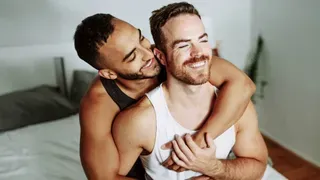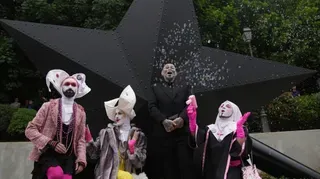September 5, 2011
Study: Gay Blacks, Straight Whites Perceived As More 'Likeable'
Kilian Melloy READ TIME: 3 MIN.
Race and sexual orientation intersected in an intriguing way in a recent study conducted by researchers at the University of Toronto, a Sept. 3 story at Science Daily said.
Test subjects of both genders rated photos of men, some white and some black, and consistently rated white heterosexual men as more likable than gay white men, using a scale of 1 - 7 and basing their assessment on the photo alone. No information about the men was made available, including their sexual orientations.
Test subjects also rated black gay men as more likable than their straight counterparts, the study showed.
"We observed that people judge others based on sexual orientation even if they are not consciously aware of whether someone is gay or straight," one researcher, Jessica Remedios, said. "Further, our judgment of gay men depends on whether they are white or black."
"These findings suggest that sexual orientation, despite lacking explicit perceptual markers, infiltrates the automatic impression that is formed," Remedios added. "By understanding how sexual orientation affects the rapid evaluations we form about others, we can learn more about predicting and minimizing the negative consequences of homophobia."
A second study in which test subjects were shown images of black and white men and told to respond with a joystick showed similar results. Participants responded more quickly when shown gay blacks and straight whites than they did when shown straight blacks and gay whites.
The study's results appeared in the Journal of Experimental Social Psychology, reported 2B Magazine on Sept. 2.
The paper's title is "Impressions at the intersection of ambiguous and obvious social categories: Does gay + black = likable?." Remedios, who is a doctoral student, and professors Alison Chasteen, Nicholas Rule, and Jason Plaks co-authored the paper.
Another recent study from the University of Toronto, undertaken together with Tufts University, indicated that gay men can be identified through visual means alone --and also suggested that women are more able to discern with a look which men are gay and which men are straight when they are ovulating. A June 23 Science Daily article reported on this study as well.
A similar spike in women's ability to tell who was gay at a glance also accompanied thoughts of a romantic or even sexual nature, the study showed.
The ability to size up gay and straight men did not extend to other women, however, according to the University of Toronto's Nicholas Rule, lead author of that study, which saw publication in Psychological Science over the summer.
"This suggests that fertility influences a heterosexual woman's attention to potential mates rather than merely increasing sensitivity to sexual orientation or nonverbal cues more generally," Rule said.
The study suggests that differences in sexual orientation have long been part of human natural variation -- long enough for the species to adapt, the researchers suggested, noting that "these findings suggest that women's accuracy may vary across the fertility cycle because men's sexual orientation is relevant to conception and thus of greater importance as women are nearer to ovulation."
Rule had helped carry out an earlier study in 2008 that demonstrated a human capacity to tell gays and straights apart visually. In that study, participants were able to tell from photographs, culled from online dating sites, who was gay and who wasn't, even if the photo was flashed for an extremely brief moment -- as short as 50 milliseconds, Scientific American reported in a February, 2009 article.
A second trial by Rule and fellow researchers used Facebook photos with the same result, disproving the theory that the individuals in the dating site pictures were wearing expressions that signaled their sexual orientations to prospective sexual partners.
Kilian Melloy serves as EDGE Media Network's Associate Arts Editor and Staff Contributor. His professional memberships include the National Lesbian & Gay Journalists Association, the Boston Online Film Critics Association, The Gay and Lesbian Entertainment Critics Association, and the Boston Theater Critics Association's Elliot Norton Awards Committee.






